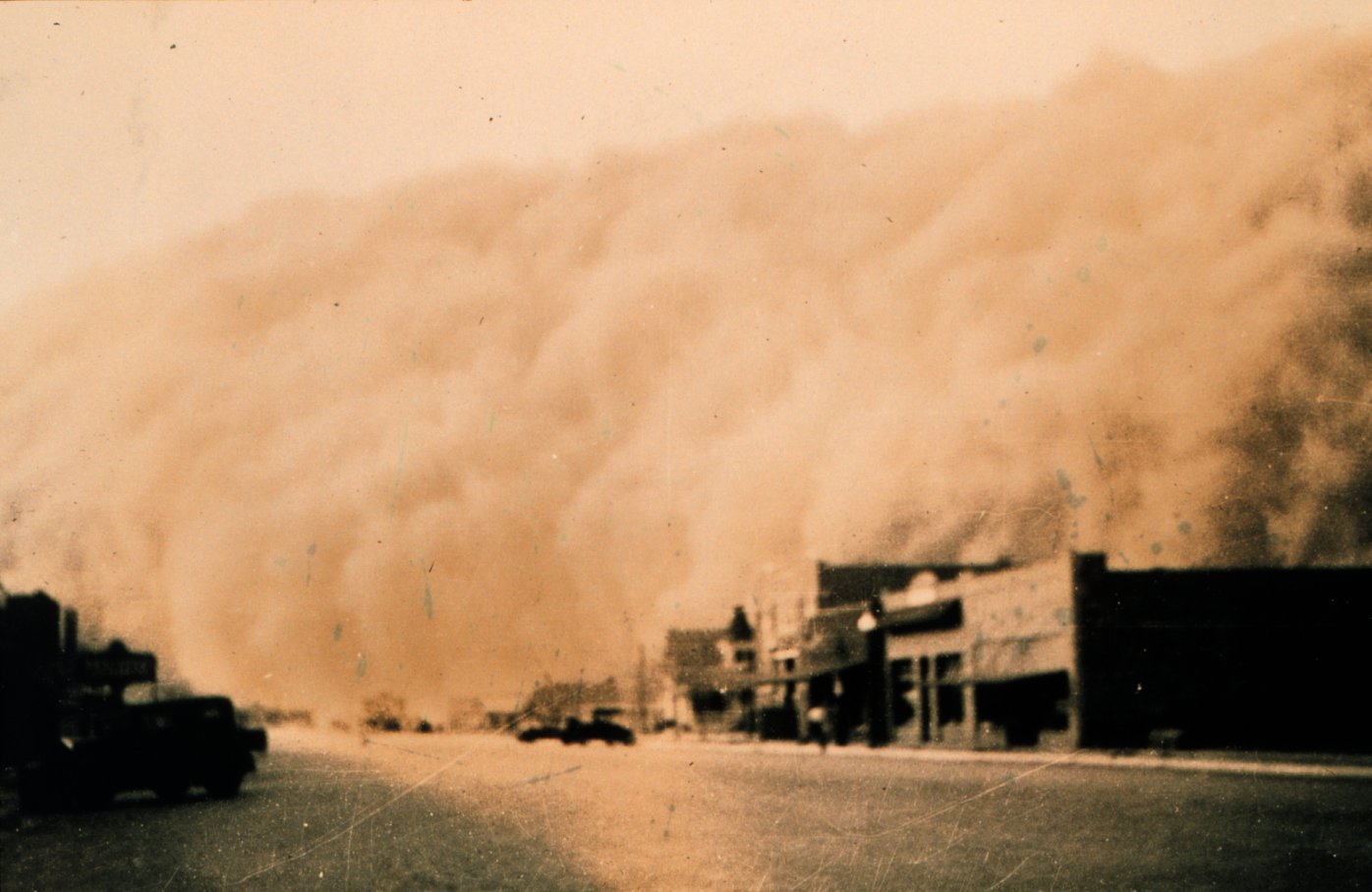We often hear about the impact climate change is having on water, causing some areas of the country to experience prolonged periods of drought while others are experiencing far more moisture than in the past.
But climate change had no role in causing the Dust Bowl. Rather, it was the result of several conditions, incidents, and unfortunate happenings.
Below are some frequently asked questions about the Dust Bowl.
What was the Dust Bowl?
The Dust Bowl brought economic, ecological, and human misery to millions of Americans. It occurred simultaneously with the Great Depression, which added to the economic suffering.
The Dust Bowl was caused by extended drought, unusually hot weather, strong winds, and poor agricultural practices.
Soil erosion along with high winds and choking dust clouds called black blizzards — because they eliminated daytime sunlight — swept through the Midwest, from Nebraska to Texas.
When did it occur?
The Dust Bowl started in 1931 and tapered off by 1939.
How many black blizzards occurred?
In 1932, there were 14 black blizzards. By 1933, there were 40.
What were the poor agricultural practices?
After World War I and throughout the 1920s, mechanized farming equipment was introduced to allow farmers to grow more crops over more land. This helped increase profits. Previously unplowed land — as much as five million acres — was plowed to produce record crops.
These record crops reached a crescendo during the 1931 season, but due to the Depression, there were few buyers. Farmers let their crops die in the fields, and the over-plowed land was left bare. In time, the fertile topsoil blew away in the winds. Drought made the situation even worse. Eventually, many farmers lost their farms to foreclosures. Their land and any remaining crops were left to turn to dust.
Did the government step in to help?
Yes; in 1933, President Franklin D. Roosevelt enacted programs to help farmers avoid foreclosures to help keep their farms afloat. The administration also set up programs to teach farmers new farming practices to protect their land and begin farming again. However, it was a major undertaking. By 1935, 35 million acres of farmland were ruined, and the topsoil covering more than 100 million acres of land had blown away.
Did the Dust Bowl cause illness?
Yes, both humans and animals suffered. The dust storms caused dust pneumonia, which occurs when excessive and prolonged inhalation of dirt and dust results in inflammation of the lungs. Acute respiratory infection is followed by painful and severe symptoms. Fever developed, and many people died of dust pneumonia.
Could the Dust Bowl happen again?
According to the Yale School of the Environment, much has changed in the U.S. heartland, “with improved irrigation and agricultural practices. [But] with rising temperatures and worsening droughts caused by global warming, another Dust Bowl in the U.S. is possible.”
Another concern is that underground water from aquifers is drying up in large parts of the Midwest.
“There comes a point where if you’re not replenishing aquifers, then all you need is the next minor drought to come along, and … you run the risk of another Dust Bowl-like event,” says Tim Cowan, a senior research fellow at the University of Southern Queensland who studies the effects of climate change on precipitation and heat waves.
Does water efficiency play a role in preventing another Dust Bowl?
Yes, it does. Water efficiency means utilizing new and existing technologies such as waterless urinals, which use far less water than traditional products, including no water at all. Water efficiency can and will play a significant role in preventing another Dust Bowl because it helps reduce the amount of water drawn from aquifers, helping them replenish, so we can better manage through another drought when it comes along.










